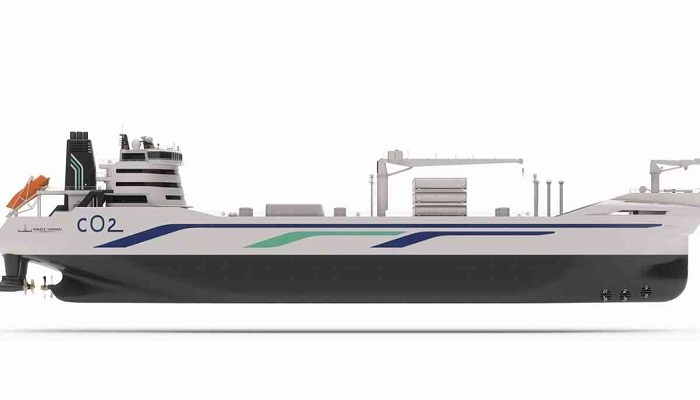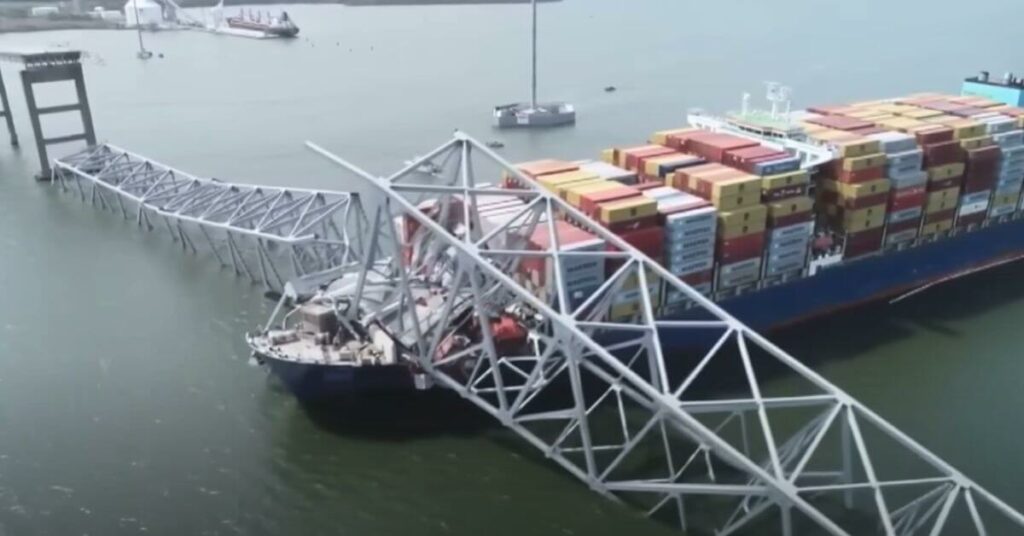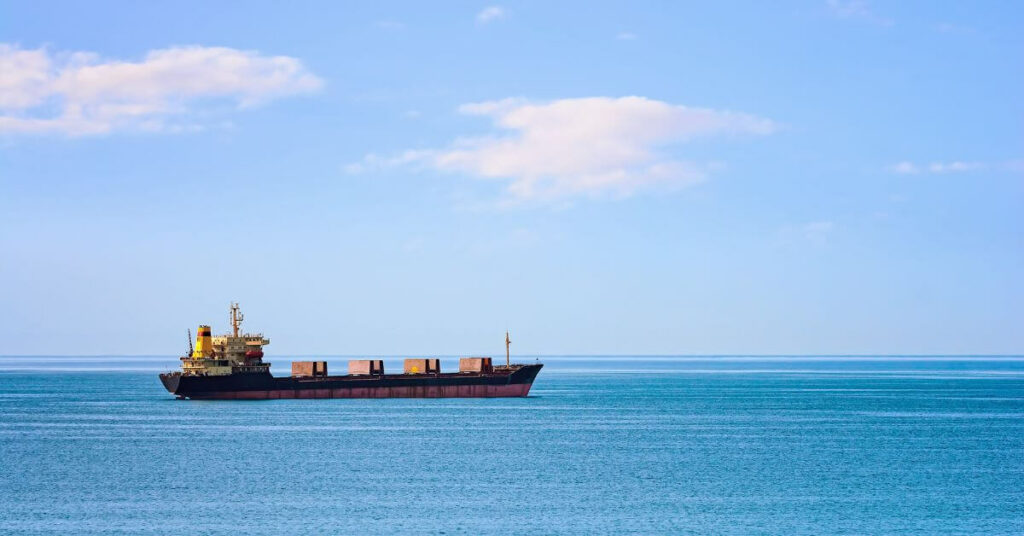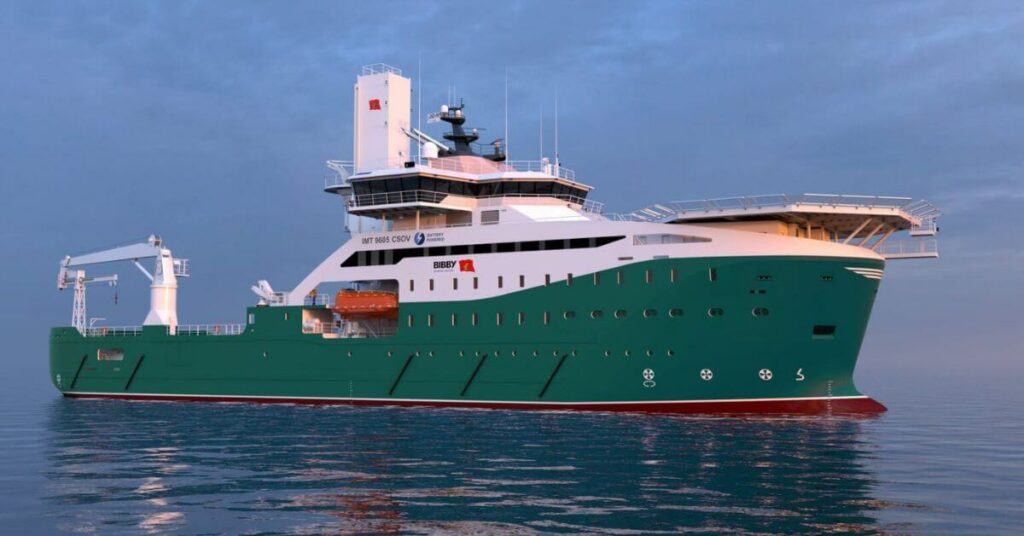Development Of CO2 Tanker To Limit Global Warming
According to the Paris Agreement CO2 emissions shall be reduced as to limit the global warming to well below 2°C, preferably max 1.5°C. By 2050 the Paris Agreement aims to reduce global warming to 1.5°C resulting in a net-zero carbon emission society.
In order for this to be achieved, a medium term political target of significant CO2 reduction by 2030 is required to reach the 2050 goals.

Within this timeframe major shore-based CO2 contributors cannot develop and install new processes and facilities. Hence, one solution is to capture the CO2 to reach the goals.
Major CO2 contributors in Europe are the energy sector and concrete production, but also the production of methanol and ammonia. Methanol and ammonia however, are considered the future fuels of shipping.
This is due to the possibility of producing them as “blue fuels” where, from the outset, CO2 normally released during production can be captured and stored.
The captured CO2 will be stored in offshore oil fields either as part of the enhanced oil recovery (EOR) process, which is already taking place on a small scale, or it can be injected into emptied and discontinued fields with storage as the sole purpose.
The value of CO2 as a “trade product” is based on political taxes and funding. One of the main drivers is the CO2 tax that controls the value of CO2.
The CO2 tax is expected to increase in the years to come; hence, transporting captured CO2 to storage or EOR sites makes it more attractive today.
In the above-mentioned value chain, transport of CO2 by ship from captured locations to offshore storage areas, as well as, onshore terminals will be a major industry that requires a new kind of vessel: the dedicated CO2 carrier.
The CO2 carrier will be a DP-2 ship with an anchor loading system. It will have tanks for storage and transfer equipment for the off-loading and optional heating of CO2 to pressure and temperature for the underground injection site.
The ship is equipped with a novel propulsion system that features a twin-skeg design with two contra-rotating propellers providing significant fuel savings, as well as, contributing to the station keeping performance.
Reference: Knud E. Hansen
Disclaimer :
The information contained in this website is for general information purposes only. While we endeavour to keep the information up to date and correct, we make no representations or warranties of any kind, express or implied, about the completeness, accuracy, reliability, suitability or availability with respect to the website or the information, products, services, or related graphics contained on the website for any purpose. Any reliance you place on such information is therefore strictly at your own risk.
In no event will we be liable for any loss or damage including without limitation, indirect or consequential loss or damage, or any loss or damage whatsoever arising from loss of data or profits arising out of, or in connection with, the use of this website.
Disclaimer :
The information contained in this website is for general information purposes only. While we endeavour to keep the information up to date and correct, we make no representations or warranties of any kind, express or implied, about the completeness, accuracy, reliability, suitability or availability with respect to the website or the information, products, services, or related graphics contained on the website for any purpose. Any reliance you place on such information is therefore strictly at your own risk.
In no event will we be liable for any loss or damage including without limitation, indirect or consequential loss or damage, or any loss or damage whatsoever arising from loss of data or profits arising out of, or in connection with, the use of this website.
Do you have info to share with us ? Suggest a correction
About Author
Marine Insight News Network is a premier source for up-to-date, comprehensive, and insightful coverage of the maritime industry. Dedicated to offering the latest news, trends, and analyses in shipping, marine technology, regulations, and global maritime affairs, Marine Insight News Network prides itself on delivering accurate, engaging, and relevant information.

About Author
Marine Insight News Network is a premier source for up-to-date, comprehensive, and insightful coverage of the maritime industry. Dedicated to offering the latest news, trends, and analyses in shipping, marine technology, regulations, and global maritime affairs, Marine Insight News Network prides itself on delivering accurate, engaging, and relevant information.
Latest Shipping News Articles You Would Like:
Subscribe To Our Newsletters
By subscribing, you agree to our Privacy Policy and may receive occasional deal communications; you can unsubscribe anytime.









